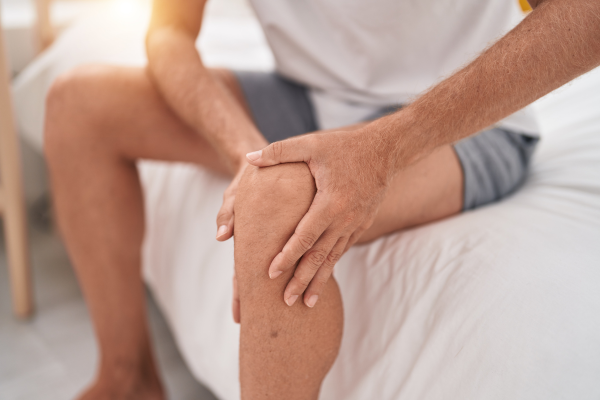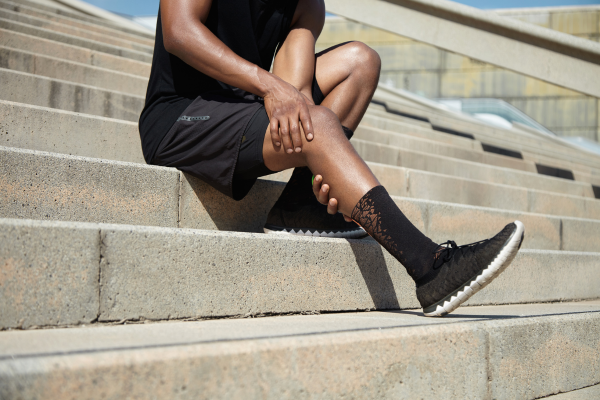Knee pain going up the stairs? Sore wrists doing the housework? Joint problems can appear in many different ways. Staying active is a key part of keeping good health — but if you have joint problems or pain, you should choose activities that benefit your body and provide relief instead of causing more pain.
Low-impact sports and activities are great for people living with joint pain, osteoarthritis, or other health conditions causing joint stiffness and discomfort. We’ll explore which sports are best for people with joint problems, and which should be avoided.
If I have joint pain, why should I exercise?
If you do not exercise because you’re scared it will exacerbate joint pain, this is often the wrong approach. Our joints need movement, and too little movement results in joints not being adequately lubricated, which causes joints’ cartilage to become brittle – resulting in pain due to friction between bones.
Damaged cartilage within joints does not regenerate, but the progressive wear known as osteoarthritis can be combated with regular exercise and target movements. Strengthening joint-stabilising muscles also contributes to reduced joint pain.
Benefits of exercise for those with joint pain or issues
You probably know the usual health benefits associated with exercise: lower blood pressure, improved circulation, and heart health being just a few. However, if you have joint issues such as arthritis, physical activity can actually improve your quality of life. Some major benefits include:
- Less pain
- Improved flexibility and function
- Increased balance
- Better mood and energy
In some cases, low-impact, moderate-intensity exercise may even delay some disabilities and allow you to stay active for longer. Everyone is different, so do what you can and work with a specialist to figure out what is suitable for you.
What can you do to protect your joints from injury?
Joint pain can be caused by a number of things. In addition to injuries and strains, you may have a condition such as arthritis or osteoarthritis causing joint problems. It’s important to find out the root cause of your joint pain with the help of an expert – you can also get advice about which sports to choose.
Warm up before training
Start each workout with a moderate warm up incorporating stretching and mobility exercises to activate your circulation and get your muscles and joints ready for smooth movement. This is important for injury prevention!
Take regular breaks
You shouldn’t really feel pain during your workouts. If you are feeling uncomfortable, take a break or stop to prevent injury. Particularly if you are a beginner or returning to exercise after a period of time, take time to let your body get used to movement again.
Ensure variety in your workouts
One way to protect your muscles and joints from becoming strained is to make your training varied.
How to protect your knees
The best ways to protect your knee joints are:
- Work on your gluteal and thigh muscles
- Avoid running until you have built up suitable strength
Exercises to avoid with knee cartilage problems
If you have knee problems, you should avoid high-impact exercises. Lower-impact exercises are best – such as swimming and walking. Be very careful with exercises such as squats and lunges that put weight on your knees; similarly, leg extensions put force on the knee joint and should be avoided.
Can you play sports with arthritis?
If you have arthritis, you shouldn’t be afraid of sports! Exercise and sports can actually improve your strength and fitness. There are several different sports and exercises that are suitable for people with arthritis:
- Strengthening exercises such as using light weights
- Aerobic exercise such as brisk walking, cycling, swimming, and dancing
- Water aerobics
- Yoga
Sports that are most suitable if you have arthritis are those that don’t put too much stress on your joints. It comes down to personal preference, and what you are most likely to enjoy and stick to!
Which sports are at high risk of causing joint injury
Some of the worst sports for your knees can result in recurrent injury which can wear out your joints or even cause permanent damage. It’s best to be careful! These sports are noted for being at risk of causing injury:
Football
One of the most risky sports due to the commonality of knee and ankle injuries suffered.
Basketball
High rate of injury from sudden movements which can be harsh on the back and knees.
Skiing
Knee injuries are particularly common in this winter sport. But if it’s your thing, here are some tips on how to do it safely!
Squash
Hard on the joints and often creates liability for knee ligament injury.
Running
Risk of stress fractures that develop over time, particularly in knee and shin regions.
Is running bad for your joints?
Aside from all of its benefits, running is often considered a cause of osteoarthritis in the knee. However, it’s worth noting that the rate of osteoarthritis increases if you are a high-intensity runner (over 57 miles per week) OR if you are sedentary – compared to regular recreational running at a moderate intensity. So if you choose to run, wear appropriate shoes and increase your distance gradually.
If you are concerned about the risks associated with running, an osteopath or physiotherapist can assess any factor that might put you more at risk of osteoarthritis and discuss the pros and cons for you as an individual if you wish to take up running.
If your muscles lack strength, you are more likely to get an injury. Consider low-impact activities like yoga for flexibility and muscle-building behind the scenes!
Low Impact Sports
If you want to keep moving while still being kind to your joints, here are some sports you can try!
Aqua aerobics
Water-based activities like aqua aerobics and aqua jogging help you to increase strength with minimal strain on your joints. Look out for classes taking place in your local leisure centre!
Swimming
Swimming does not exert pressure on your joints and is a perfect way to exercise without strain. It’s excellent cardiovascular training that also strengthens your muscles.
Rowing
Whether in the water or on a rowing machine, the flowing movements you do during rowing help protect your joints while also strengthening around 80% of the muscle groups in your body.
Cross-trainer
The elliptical or cross trainer is often recommended for those with joint problems and is a gentle alternative to running or jogging as your knees won’t have to carry your entire body weight during the exercise.
Cycling
Gentle cycling, whether outside or on a stationary bike, can be very beneficial for your knees and hips. When moving at a low gear or resistance, it exerts very little pressure or impact on your joints. As your body weight rests mainly on the saddle area, your knee joints are able to move freely and without strain.
Is cycling good for knee cartilage?
Cycling is a suitable exercise for knee cartilage, but you can also try other low-impact exercises that will support mobility while strengthening knee cartilage (such as walking). If you choose to cycle, make sure your bike is set up correctly to ensure your joints are supported.
Hiking
Time to get some comfy hiking boots on! Walking on level ground is recommended as a low-impact activity, as long as you ensure smooth movement by keeping your knees slightly bent and using walking sticks if tackling an incline.
Yoga & Pilates
These exercises are very suitable for beginners with joint pain and people returning to exercise. As they focus on gentle and calm movements they help to mobilise joints and strengthen muscles alike.
Regardless of what exercise you choose, make sure to modify it where needed to help reduce any strain on your joints and make sure you are comfortable.
Contact Us
Are you looking for treatment or advice for your joint problems? Get in touch with us at Carl Todd Clinics to ask for a consultation. Our team can help assess your physical condition and help you create an activity regime that works for you.





